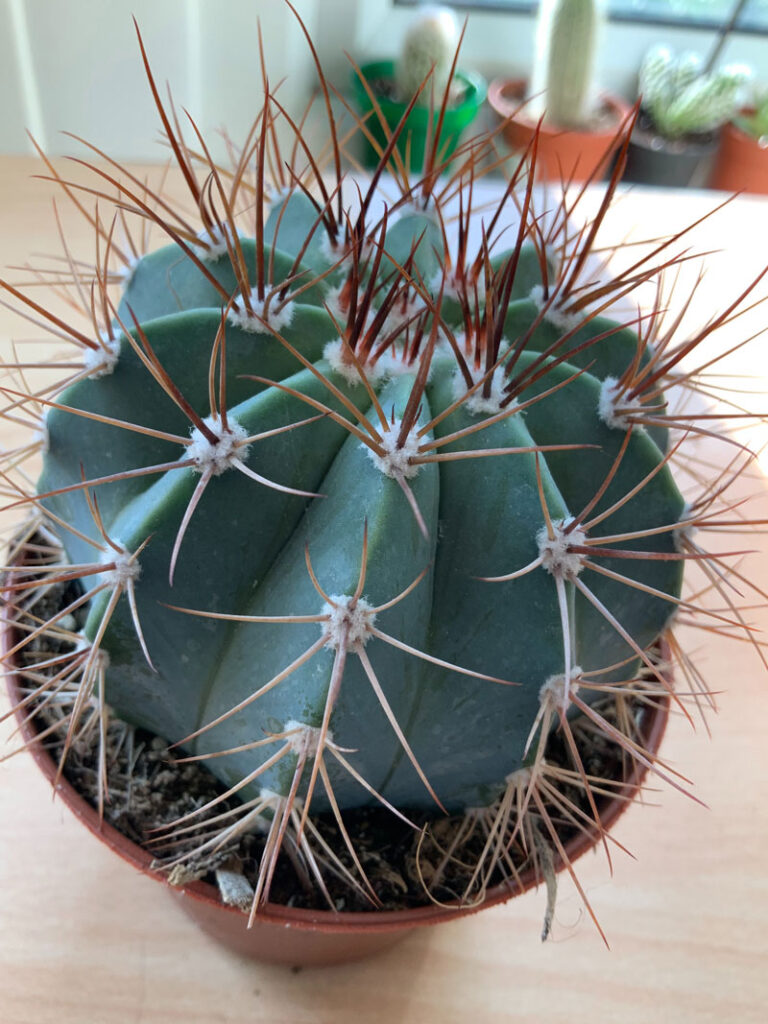No products in the basket.
Plants Blog
Different Types of Cactus Plants for Your Home
Plant enthusiasts, whether beginners or experts enjoy their cactus plants because of their unique attractive features and the ease of growing and caring for them. Cacti are succulents with herbaceous or woody stems that contain chlorophyll. Like all succulents, they store water in their stem or foliage, but they also feature areoles, little bumps on the plant stems’ surface that the spines grow from.
These desert-native plants are quite adaptable as home plants. Putting them in just about any area in your home shouldn’t be any problem. They grow slowly, require little maintenance, and do not require you to water, feed, repot, or prune them very often.
Another interesting reason plant owners love cactus plants is their many varieties. There are cacti of all shapes, sizes, with and without spines, and some even have brightly colored flowers.
Christmas Cactus
Christmas cacti bloom naturally, triggered by the temperature and day length. When temperatures fall consistently into the range of 40-50oF, or if they spend 14 hours per day in complete darkness, flower buds begin to appear, eventually producing bright pink blooms. They require more watering than other cactus types and prefer a humid climate.
Barrel Cactus
Barrel cacti are popular ornamental plants, preferred by home gardening enthusiasts for their yellow, orange, red, or pink flowers. They also have many varieties with different spine features – dense, long, sharp, and clustered tightly or with no spines at all. They can survive with watering as infrequently as once every 2-3 months.
Star Cactus
Also called starfish cactus or sea urchin cactus because of its shape, Star cactus grows attractive areoles along its ribs and has no spines. It is a small plant that grows to only about 2 inches tall and 5 inches wide, ideal for an indoor succulent garden. A yellow or white bloom is this petite cactus’ attractive feature. Its flowers are yellow with a reddish base.
Feather Cactus
Don’t be deceived by the fluffy and soft-looking thing around the cactus surface. What looks like feathers act as camouflage for the sharp spines beneath it. When making it your houseplant, it is best to grow Feather cactus in a shallow container. In watering the plant, avoid wetting its “feathers”. Feed it twice a year with cactus food.
Old Lady Cactus
A type of powder puff cactus, a cactus that is covered with soft white hair, making it look like a round cotton ball, Old Lady cactus is covered with spines and white down. It is one of the easiest cactus plants to grow, which makes it a great choice for inexperienced cactus growers.
Bunny Ear Cactus
Its name is appropriate for this cute-shaped cactus. Sometimes called angel wing, Bunny Ear cactus does not have spines like a traditional cactus. Instead, it has glochids, barbed bristles on the areole, which give it a polka-dot appearance that can still harm you.
Moon Cactus
The bright colors of Moon cactus make it a popular addition to a succulent garden. It is a hybrid plant grafted from two types of cactus plants. The lifespan of these plants is shorter than those of other species. Staying just under 6 inches tall, Moon cactus requires little maintenance and only occasional watering.
Fairy Castle Cactus
A Fairy Castle cactus consists of many clumped stems with a varying height that resemble the turrets of a castle. A slow-growing cactus, it can reach up to 6 feet in height. Its growing tips extend and eventually branch out as they grow. It has distinct ribs and short and dense spines. On the rare occasion this cactus flowers, it produces large white flowers that open at night.
Parodia
Parodia is a ball-shaped cactus that boasts showy flowers. Compared to other types, the cactus prefers less light and more water.
Bishop’s Cap Cactus
Named for its star-shape that resembles a bishop’s cap, this cactus features a short-blooming yellow flower. The plant is easy to grow, requiring little water and space.
Growing cactus plants takes only a little care and lots of love for the succulents. They can go a long way in having plants that will be a source of delight in your home for many years.

